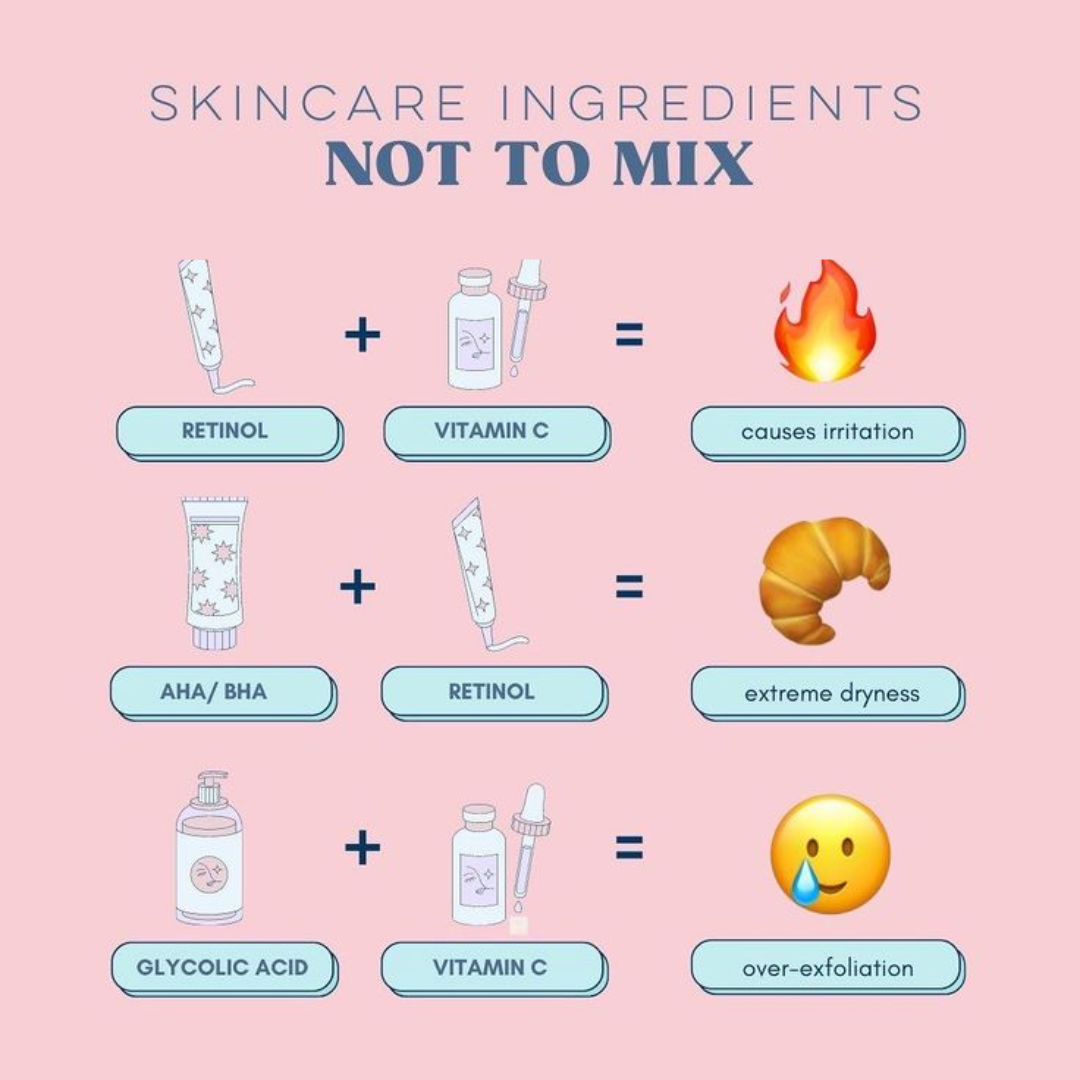
What not to mix with azelaic acid?
Share
L'azelaic acidazelaic acid, a recognized dermatological active ingredient, is a must-have in facial care for skin prone to imperfections and acne-prone. This dicarboxylic acid is valued for its anti-inflammatory properties, anti-bacterialand for its effectiveness in refining skin texture. However, precautions must be taken when using it, especially when combining it with other products. Mixingazelaic acid with certain ingredients can reduce its effectiveness, irritate the skin or cause side effects. So which products should you avoid? Here's everything you need to know to optimize your azelaic acid skincare.
What is azelaic acid and why use it?
L'azelaic acid is a dicarboxylic acid derived from cereals such as barley, wheat and rye. This powerful ingredient is often used in dermatological treatments for its many benefits:
-
Blackhead reduction Unclogs sebaceous sebaceous glands and prevents clogged pores.
-
Anti-inflammatory properties It soothes redness and irritation, making it an ideal choice for sensitive skin.
-
Anti-bacterial action : L'azelaic acid fights the bacteria responsible foracne.
-
Improved skin texture By gently exfoliating dead cellsit contributes to clear, even even skin tone.
It is found in various concentrations, generally between 15 and 20%in creams, gels or serums. Dermatologists recommend applying it morning and evening to theentire facebut it's crucial to avoid certain combinations to ensure optimal results.
Products to avoid with azelaic acid
1. Other powerful exfoliating acids
Althoughazelaic acid is relatively mild, it remains an exfoliant. Combining it with other acids such as glycolic acid, salicylic acid or lactic acid can lead to over-exfoliation. This risksdry damage the skin barrier and cause irritation. If you use an acid such as salicylic acid to target blackheads or dilated poresalternate application days rather than overlapping them.
2. Retinoids
Retinoids, such as retinol or tretinoin, are also exfoliants and stimulate cell renewal. When combined withazelaic acidthe skin can become highly reactive, leading to redness, flaking and burning. To avoid these inconveniences, use retinoids in the evening andazelaic acid in the morning, or consult a dermatologist for personalized advice.
3. Vitamin C
Vitamin C is a powerful antioxidant, but can be unstable when mixed with other active ingredients. Simultaneous use of vitamin C and azelaic acid azelaic acid skincare can reduce the efficacy of both products and cause irritation. To reap the benefits of both ingredients, apply vitamin C in the morning andazelaic acid in the evening.
4. Benzoyl peroxide
Benzoyl peroxide is a common ingredient used to treat acne, but it can be too aggressive when combined withazelaic acid. This combination risksdry out and cause severe irritation. If you wish to use these two ingredients, apply them at different times of the day and follow with a moisturizing cream to soothe the skin.
5. Overly concentrated essential oils
Some essential oilssuch as tea tree or peppermint, can irritate the skin when used withazelaic acid. These ingredients, although natural, are powerful and should be used sparingly, especially on skin that is prone to redness or acne.

How to use azelaic acid
To maximize the benefits ofazelaic acidit is important to adopt an appropriate skin care routine:
-
Cleanse your skin with a gentle cleanser Opt for cleansers that won't damage the skin barrier.
-
Moisturize with a suitable cream An moisturizing cream helps maintain skin balance and prevent irritation.
-
Apply sun protection : L'azelaic acid can increase skin sensitivity to the sun. Use a broad-spectrum sunscreen every morning.
-
Follow application instructions Use a small amount ofazelaic acid (one pea is enough) and spread evenly over the entireentire face or on targeted areas.
-
Combine with compatible ingredients Active ingredients such as zinc, l'thermal spring wateror hydrolats (e.g. witch hazel) are perfect to complete your routine.
Why avoid layering certain products?
The skin has a limited capacity to absorb active ingredients, and layering incompatible ingredients can lead to side effects such as :
-
Skin irritations Redness, itching, burning sensation.
-
Weakenedskin barrier Over-stimulation can disrupt the natural sebum secretion, leading to dryness or blotchy skin. clear skin weakened skin.
-
Reduced product efficacy Some active ingredients may cancel each other out when used together.

Alternatives and solutions to avoid incompatibilities
If you want to integrate several assets into your routine, there are simple solutions to avoid incompatibilities:
-
Alternate days of use For example, use a vitamin C skincare product on even-numbered days and anazelaic acid on odd-numbered days.
-
Separate applications during the day Apply one ingredient in the morning and another in the evening.
-
Choose products formulated to be used together Some skincare products combine several active ingredients in a balanced way, without risk of irritation.
When should you see a dermatologist?
If you experience persistent redness, irritation or worsening of your blemishes after introducingazelaic acid into your routine, consult a dermatologist. This professional will be able to assess your skin and suggest an appropriate routine. What's more, if you're considering more powerful treatments such as retinoids or benzoyl peroxide, medical advice is essential.
Example of a skincare routine with azelaic acid
Here's a simple, effective routine for skin that's prone to acne or redness:
-
Morning :
-
Cleanse your skin with micellar water or a mild gel.
-
Apply a soothing hydrosol, such as witch hazel.
-
Apply aazelaic acid.
-
Moisturize with a moisturizing cream and apply sun protection.
-
-
Evening :
-
Remove make-up with a cleansing oil make-up remover or micellar water.
-
Clean your skin with a mild cleanser.
-
Apply a moisturizing serum or cream containing zinc. zinc.
-
Conclusion
L'azelaic acid is an effective ingredient for treating skin that is prone its use requires a few precautions. Avoid combining it with strong acids, retinoids or aggressive products to preserve your skin's health. By following an appropriate routine and observing the application instructions, you'll be able to reap the full benefits ofazelaic acid and achieve clear skin and balanced skin. Don't hesitate to ask a dermatologist to personalize your routine and maximize results.
